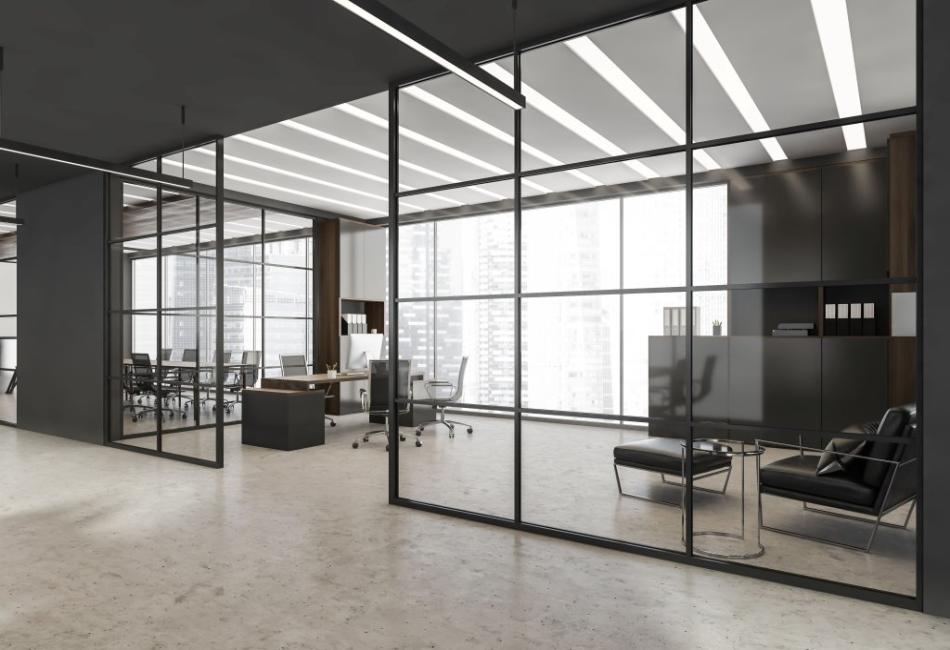What is Plexiglass?
Acrylic glass, also known as Plexiglass, is a transparent, oil-based thermoplastic which is used in the construction of tanning beds as a cost-effective alternative to window glass and safety glass. Unlike real glass, manufactured from molten silica sand, plexiglass (Poly (methyl methacrylate), or PMMA) is a plastic, invented in 1928_OS as a material. Developed during World War II for airplane windows and vehicle canopies for its strength and light weight, it was used only during wartime.
The word “Plexiglass” is a brand name from the brand Plexiglas®, although other brands including Perspex®, Lucite®, and Acrylite® also make the same material. Today, plexiglass is employed in a variety of applications, from medical devices, aquariums, signage to household projects.
Pros of Plexiglass
1. Lightweight
Plexiglass is twice as light as ordinary glass and up to 30 times as strong. Its light weight means it is easy to ship, install and incorporate into projects, like protective shields, displays and even face masks.
2. Durable
Acrylic sheets are more than 17 times more resistant to impact than glass! The material bends as it’s pressed, becoming more resistant to breaking. More robust options, like polycarbonate sheets, are virtually unbreakable and meet the most demanding applications.
3. Easy to Work With
Plexiglass can be cut, drilled, scored, and bent with simple tools or heat – featured properties that tempered glass lacks. Its malleability makes it the perfect choice for any custom project, from DIY remodels to your dream house construction.
4. Clearer Than Glass
Up to 92% light transmittance, high quality plexiglass is clearer than glass, not easily destroyed. It’s ultra-clear for protecting the look of the items while keeping safe and dust free, so that makes it ideal for museum displays, retail displays and protective covers where optical products need to be seen.
5. UV Resistant
Certain plexiglass types will block the harmful UV rays, which will prevent interior from fading or sun damage. This makes it ideal for outside windows and skylights, though exposure over time can still lead to yellowing if not coated.

Cons of Plexiglass
- Not Very Scratch Resistant
Plexiglass ranks around 3 on the Mohs hardness scale, compared with 6 for tempered glass. This can cause it to scratch from regular wear and tear. (Special coatings or a good scrubbing are necessary in order to keep it clear.)
- Not Heat Resistant
The extreme temperature created by a fire also weakens plexiglass. It is not suitable for hot areas, like south-facing commercial windows.
- Prone to Yellowing in the Sun
UV-resistant acrylic is available, but even unmodified acrylic will yellow and discolor over time under direct sunlight. Be sure to check for coatings and/or specifications before deciding on plexiglass for outdoor use.
- Not Eco-Friendly
Plexiglass is petroleum dependent, hard to recycle and emits greenhouse gases. And it’s not biodegradable, unlike glass, so it’s a less sustainable choice.
Plexiglass Across Industries
Plexiglass, because of its versatility, is utilized across a vast range of industries:
- Auto & Aircraft: Light covers, canopies for airplanes, and instrument covers.
- Medical & Dental: Prosthetics, medical devices, lab equipment.
- Construction: It is made with skylights, windows and hurricane-resistant panels.
- Aquariums & Marine: High pressure tolerant (Suitable for big tanks).
- Art & Design: Sculptures, paintings and contemporary furniture.
- Retail & Public Spaces: Signage, sneeze guards, protective barriers.
Everyday Uses of Plexiglass
- Safety Windows & Skylights (3): Durable and shatter proof windows are a perfect complement to this already amazing structure.
- Light Fixtures: Brightness is improving with clear, non-yellowing sheets.
- Shower Doors & Enclosures: Moisture/ Water Resistant, Fashionable.
- Furniture: High-design, contemporary tables, chairs and decor.
- Shields: Retail point of sale counter and office barriers.
- Signs: Illuminated signage, signage illuminated by high-intensity light on both sides of the attributes and little distortion.
How to Repair Plexiglass
- Small Scratches: Use a rubbing compound or an acrylic polish.
- Deep Scratches: Fine grit sand 600–1200 grit then polish.
- Cracks: In some cases, torn pieces can be welded by acrylic adhesives or solvents (albeit with visible lines).
- Cleaning: Do not use abrasive cleaners or rub with a scouring pad or iron brush, simply use mild soap and soft cloth so as not to scratch the Painting on the surface.
Plexiglass Installation and Replacement
For larger jobs, we suggest having a professional install the product. Groups such as Glass Doctor® provide installation and repair support, so the glass never gets in the wrong hands and is durable with pro warranties.
Plexiglass FAQ
Q1. Is Plexiglass glass or plastic?
Plexiglass is plastic (PMMA), not true glass. It mimics glass appearance while being stronger and lighter.
Q2. Is Plexiglass easily breakable?
No, plexiglass is impact-resistant and durable, but it can scratch or crack under excessive force.
Q3. What is the lifespan of Plexiglass?
Typically 8–10 years outdoors, depending on exposure. With proper care, it maintains clarity and strength longer.
Final Thoughts
Plexiglass, also known as acrylic glass, is a highly durable and transparent alternative to regular glass. The advantages of the material, clarity, long life, customability, make it well-liked across all industries and uses, these are nearly unlimited uses. But its cons, such as scratch susceptibility, temperature vulnerability and environmental considerations, make it unsuitable for all projects.

